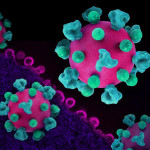As clinicians and public health officials push to get more of the U.S. HIV population on treatment and to full viral suppression, major disparities exist in the rates of success in reaching this milestone, aidsmap reports. Additionally, in a recent Centers for Disease Control and Prevention (CDC) analysis, researchers found that looking at rates of sustained viral suppression over a year’s time is a better way to assess treatment success than simply noting the most recent viral load test result.
The CDC researchers analyzed data from the National HIV Surveillance System on 630,965 people living with diagnosed HIV in 2014. The data were reported by 33 jurisdictions and represent 70 percent of all people diagnosed with HIV in the United States at that time. Findings were presented at the 2017 Conference on Retroviruses and Opportunistic Infections (CROI) in Seattle.
Fifty-four percent of the cohort had two or more viral load test results registered in 2014, while 14 percent had one test and 32 percent had none.
Among the 92,309 people who had only one viral load test in 2014, 76 percent had a viral load below 200 at that time, considered full viral suppression in this analysis.
Among all those with a viral load test in 2014, 57 percent were virally suppressed according to their last test. But only 48 percent were virally suppressed either in all their 2014 test results or in both their single test results from 2013 and 2014. Considering the disparity between these two figures, the CDC researchers concluded that analyses that rely on the most recent viral load test result as an indicator of the treatment success rate in a population could overestimate this figure by 20 percent.
Eight percent of those with any viral load test result in 2014 were never virally suppressed. Additionally, the one third of people who had no test results that year were probably not in regular care for the virus and not virally suppressed either.
Overall, women were less likely to have durable viral suppression compared with men (44 percent versus 49 percent). Women and men who contracted HIV through injection drug use had lower rates of durable viral suppression compared with men who have sex with men (MSM) (a respective 41 percent and 38 percent versus 53 percent).
Blacks were almost universally less likely ever to achieve viral suppression in 2014 compared with Latinos and whites. Among MSM in particular, a respective 12 percent, 6 percent and 4 percent of Blacks, Latinos and whites were never virally suppressed.
To read the aidsmap article, click here.
To read the conference abstract, click here.
To view a webcast of the conference presentation, click here.







Comments
Comments